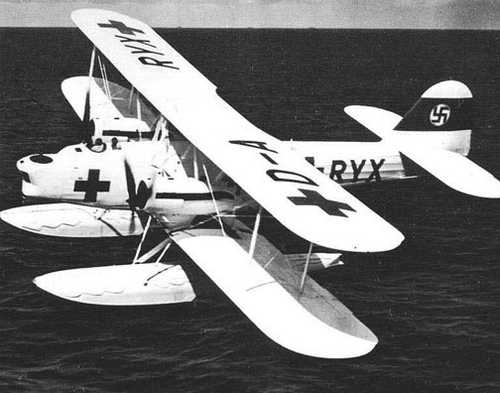
German Air Force
Heinkel He 59 floatplane.
Heinkel He 59B floatplane in flight. The original was designed as a multi-purpose land-based aircraft and floatplane by Heinkel, with development dating from 1930. While military use was, from the beginning, intended, the aircraft was originally designated as being for civil use, in view of treaty restrictions. The rather lumbering biplane design could be designed as rather backward-looking, even then. However, it proved surprisingly useful and, in various adaptations, operated as a torpedo bomber, reconaissance plane and communications aircraft (albeit in ever smaller numbers) as late as 1944. The high point of its operational career came on 10 May 1940, when 12 specially adapted He 59Bs landed a party of German infantry and combat engineers on the the Nieuwe Maas river, on either side of the Willems Bridge in Rotterdam. Faced with any sort of organised resistance, this should not have been productive. However, there was none - the Dutch in the area were probably not clear that there was, yet, a war on. As a result, the Germans took possession of the bridge, and were subsequently reinforced by German paratroopers and airborne infantry who arrived - via commandeered trams - from other German airborne landings. Subsequent Dutch attacks, from the river and it banks, failed to dislodge the Germans, but placed them under severe pressure. The Germans sought to relieve this by means of a major attack by 9th Panzer Division and related units from the south, for which they requested air support. This paved the way for the "Rotterdam Blitz", of 14 May 1940. Another fine mess ... Best regards, JR.
4086 Views
5/4/2010
